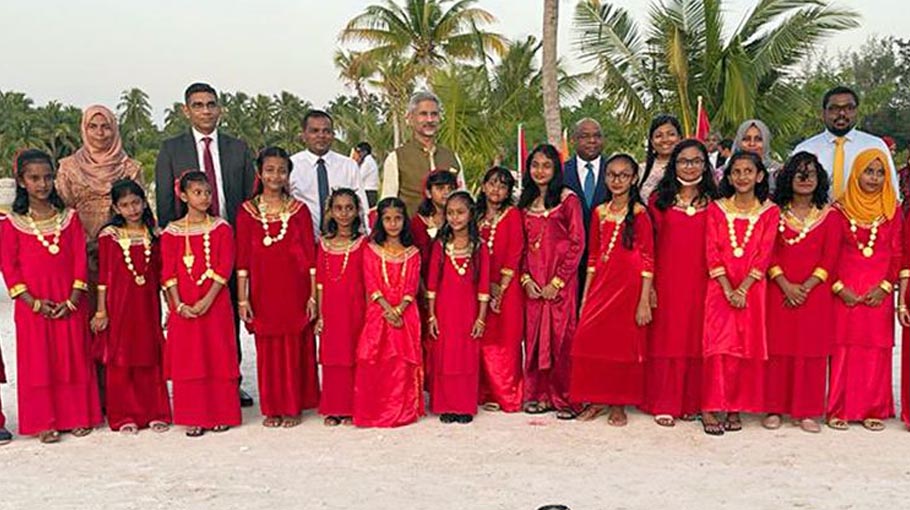Seeking peace and stability in the Indian Ocean

Historically, the Low Countries or the Lowlands referred to several small states in the coastal regions in Northwest Europe. Netherlands, which also means lower lands, in present day Europe is a small country, a good portion of which is made of land reclaimed from the sea and managed by a series of dikes. Its highest natural geographical point is just over a 1000 feet.
It is only when I went to the Maldives a couple of years back that I realised that it is much lower than Holland. It is, in fact, the lowest country in the world. Its maximum natural height is under eight feet, less than a one storey building, while the national average is less than five feet above sea level. Imagine what would happen if the height of the sea rose by just a few feet. Much of the country of close to half a million people would need to be evacuated.
Maldives is an exceptionally beautiful country of nearly 1200 coral islands in a double chain — literally two necklaces of coral atolls. Which is what its original name means — maladvipa, literally a necklace of islands. In Sanskrit, mala means necklace and dvipa means island, with similar words in Sinhalese, Malayalam, and Tamil.
Ancient aboriginals must have settled there as they spread out of Africa, travelling all the way to Australia some 40,000 years back. An international culture
The present day islanders came much closer to our times some 2000 years back from the Indian subcontinent. They were called Dvipis or Divis. Even today, the native tongue is Dhivehi, an Indo-Aryan language. After Hinduism and Buddhism, Islam arrived in these parts with traders and conquerors in the early twelfth century. Today, over 95% of the islanders are Sunni Muslim, although significant traces of Malayali, Tamil, Sinhalese, and other cultures from India remain.
One of the most scattered of countries in the world, with islands spread across over 500 miles from North to South, Maldives is, nevertheless, important in the region. Apart from its strategic location in the Indian Ocean, it is naturally fortified, with only two open passages from the Southern side permitting access into the nation.
Read More: The enduring legacy of Madeleine Albright
Maldives was part of the British Empire and gained its independence on July 26, 1965. The country became a republic in 1969, adopting its current constitution in 2008. Naturally, it has a very close historic relationship with India. India was the first country to recognise Maldives upon the latter’s independence and established close diplomatic relations with it. Given the age-old cultural and commercial closeness between the two countries, it is no surprise that India plays a significant role in Maldives. When in 2014, the country faced a severe freshwater crisis, India promptly shipped 1200 tonnes of drinking water to the island nation.
Development partnership
Indian External Affairs Minister, S Jaishankar’s recent visit to Maldives underscored this “Deep and Abiding Friendship.” Inaugurating, with President Ibrahim Mohamed Solih, the India-funded National College for Policing and Law Enforcement (NCPLE) in Addu city on March 23, Jaishankar said that India-Maldives partnership was of great consequence. The NCPLE, he said, was “a real symbol of our development partnership,” which would strengthen “exchanges and training between the Police forces of Maldives and India.”
The subtext was that India would also guarantee the political stability and internal law and order, ensuring that Maldives’ “India first” policy does not change. “India and Maldives share a deep and abiding friendship,” Jaishankar underscored, “Today, our relationship is so full of promises and possibilities for our youth and for our future generations. It is also a partnership of great consequence and a real force of stability and prosperity for the Indian Ocean Region.”
Excellent relations
Though the “India Out” campaign in the Maldives may not have succeeded, Jaishankar’s visit shows that it was not taken lightly. Jaishankar emphasised that defence cooperation was an enduring pillar of the India-Maldives friendship.
He said this as he handed over a sophisticated Coastal Radar System, which comprises ten radar stations, to the Maldives Chief of Defence Forces. The enhanced security of Maldives should be good for the whole region.
Jaishankar also praised Solih for Maldives’ resilience during the Covid-19 pandemic: “Your vaccination programme, your decision to establish an air bubble, our working together, I think these have all been examples of how challenges bring two neighbours (together) much more closely than they would be otherwise.”
He added, “Your policy of ‘India First’ and our policy of ‘Neighbourhood First’, these are not just phrases but these are actually the very fulcrum of our relationship.”
India’s support to Maldives exceeds $2.5 billion. It includes grants, loans, budgetary support, capacity building, and training assistance. India’s Exim Bank will fund infrastructure projects, housing, airport redevelopment, even a cricket stadium with a credit line of $40 million. Peace and stability in the Indian Ocean depend on all countries respecting the international rule-based order and the open seas policy. The India-Maldives partnership will contribute considerably to this as it will to Maldives’ prosperity, democracy, tourism, human rights, education, and internal law and order.
Makarand R. Paranjape is a Professor of English at the Jawaharlal Nehru University. Views are personal.
Source: Gulf News




